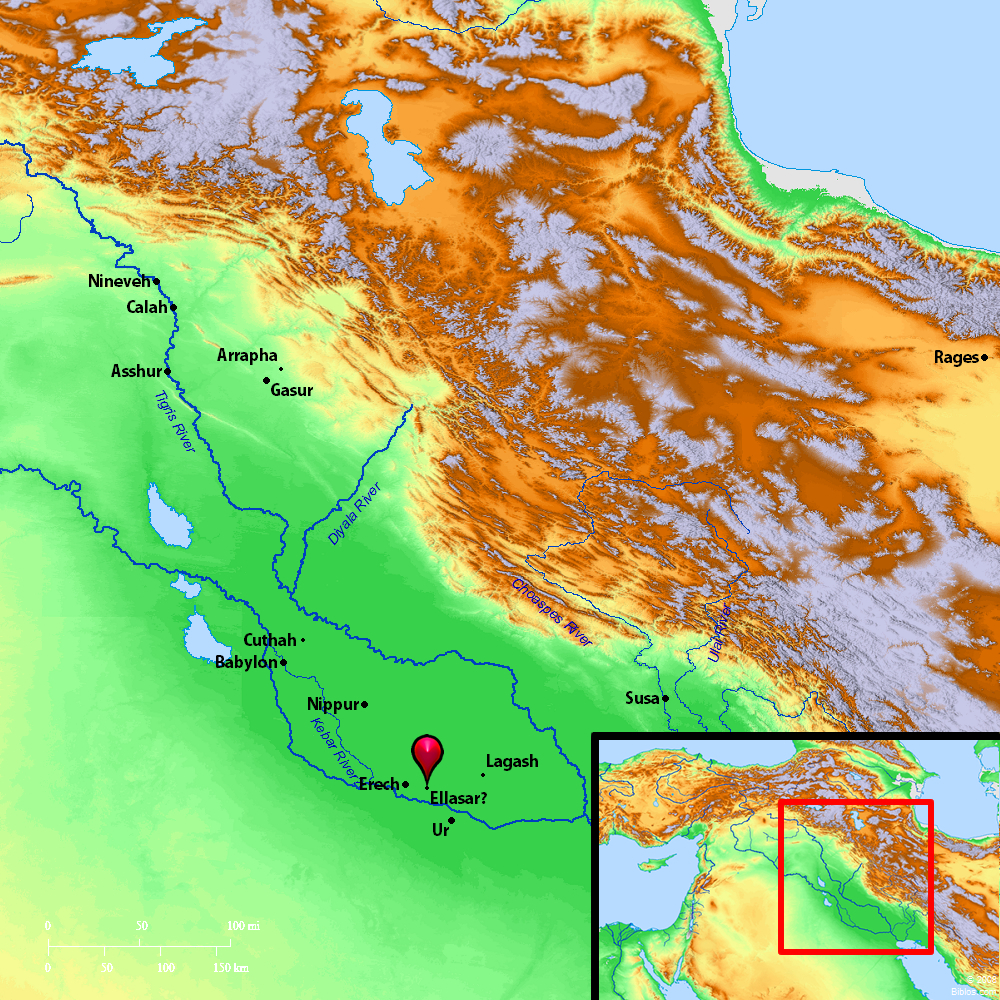Atlas

Ellasar and surrounding region
Maps Created using Biblemapper 3.0Additional data from OpenBible.infoOccurrences
Genesis 14:1 It happened in the days of Amraphel, king of Shinar, Arioch, king of Ellasar, Chedorlaomer, king of Elam, and Tidal, king of Goiim,
Genesis 14:9 against Chedorlaomer king of Elam, and Tidal king of Goiim, and Amraphel king of Shinar, and Arioch king of Ellasar; four kings against the five.
Encyclopedia
ELLASARel-a'-sar ('ellacar):
1. The Name and Its Etymology:
The city over which Arioch (Eri-Aku) and other Babylonian kings ruled (Genesis 14:1). The Semitic-Babylonians form of its name is (al) Larsa, "the city Larsa," a form which implies that the Hebrew has interchanged r and s, and transposed the final vowel. Its Sumerian name is given as Ararwa, apparently for Arauruwa, "light-abode," which, in fact, is the meaning of the ideographic group with which it is written. The ruins of this ancient site are now known as Senqara, and lie on the East bank of the Euphrates, about midway between Warka (Erech) and Muqayyar (Ur of the Chaldees). In addition to the name Larsa, it seems also to have been called Aste azaga "the holy (bright, pure) seat" (or throne), and both its names were apparently due to its having been one of the great Babylonian centers of sun-god worship.
2. Its Holy Places:
Like most of the principal cities of Babylonia, it had a great temple-tower, called E-dur-an-ki, "house of the bond of heaven and earth." The temple of the city bore the same name as that at Sippar, i.e. E-babbar, "House of Light," where the sun-god Samas was worshipped. This temple was restored by Ur-Engur, Hammurabi (Amraphel), Burna-burias, Nebuchadrezzar and Nabonidus. Among the tablets found on this site by Loftus was that which gives measures of length and square and cube roots, pointing to the place as one of the great centers of Babylonian learning. Besides the remains of these temples, there are traces of the walls, and the remains of houses of the citizens. The city was at first governed by its own kings, but became a part of the Babylonian empire some time after the reign of Hammurabi.
LITERATURE.
Loftus, Chaldea and Susiana; Delitzsch, Wo lag das Paradies?; Zehnpfund, Babylonien in seinen wichtigsten Ruinenstatten, 53-54.
T. G. Pinches
EI'LASAR, very probably at Larsa, 108 ms. s.e. of Babylon, 15 ms. e.from Erech in ancient Chaldea. Only a mound with ruins, but the inscriptions show that it was a more ancient city than Babylon. See Gen. 14:1, 9, as the only places in which it is mentioned.
Strong's Hebrew
H495: Ellasara country of unknown location




